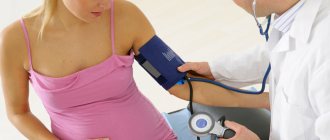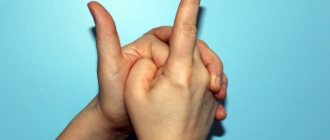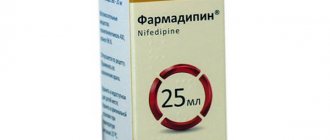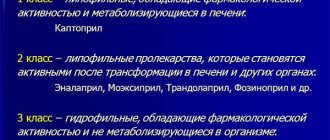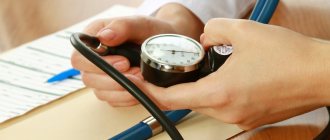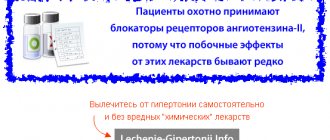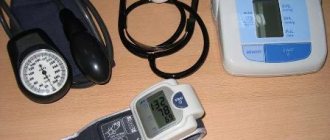What pressure is considered normal?
Hypertension is not a death sentence!
It has long been a well-established opinion that it is impossible to get rid of HYPERTENSION forever. To feel relief, you need to continuously drink expensive pharmaceutical drugs. Is it really? Let's figure out how hypertension is treated here and in Europe...
It is generally accepted that the average normal blood pressure throughout the day is 130/80 millimeters of mercury. Hypertension is registered when systolic pressure is above 140 millimeters of mercury and diastolic pressure is above 90 millimeters of mercury.
Normal pressure is between 130/80 and 140/90 millimeters of mercury. Hypertension is a disease that can worsen significantly over 2-5 years if the patient does not make efforts to change their lifestyle.
The greatest risk of developing hypertension is in people who suffer from diabetes. In this case, the decrease in blood pressure depends on what treatment the doctor prescribed.
Although a healthy person's blood pressure should not exceed 140/90, people at risk should aim for 1280 millimeters of mercury. Otherwise, the risk of deformation of internal organs will increase compared to people who do not have any additional diseases.
With a pressure reading of 180/110 millimeters of mercury, we can talk about a serious health hazard and the need for urgent medical attention. If the pressure is above 200/120, then this condition threatens consequences that threaten a person’s life. The condition is called “arterial malignant hypertension.”
Hypertension is diagnosed when blood pressure is consistently above normal levels, as confirmed by multiple blood pressure measurements.
Treatment should be prescribed for blood pressure exceeding 130/80 millimeters of mercury in people who suffer from:
- diabetes mellitus,
- various pathologies associated with the work of the heart.
Interestingly, blood pressure can increase due to external factors. For example, some people's blood pressure levels become higher when measured in a health care setting.
Doctors attribute the “white coat” effect to the emotional stress and tension that people experience during the process of measuring their blood pressure. Moreover, if the procedure takes place at home, then the indicators do not have a serious deviation from the norm. Such arterial hypertension, unlike hypertension, does not pose serious risks to human health.
Pressure is divided into:
- Systolic or upper,
- Diastolic or lower.
Systolic pressure refers to the pressure of blood on the vessels when the heart contracts at its maximum. Diastolic pressure is the pressure exerted by the blood on the walls of blood vessels when the heart is maximally relaxed. The unit of measurement for blood pressure is millimeter of mercury.
When measuring blood pressure, you need to take into account pulse pressure, which is the difference between diastolic and systolic readings.
In older people, pulse blood pressure tends to rise as diastolic pressure decreases due to large blood vessels losing their elasticity over time.
This condition is called isolated systolic hypertension, which is dangerous due to many complications. Even if only the systolic pressure is significantly higher than normal, and the diastolic pressure is normal, then we can still talk about a certain type of hypertension, which requires treatment.
High blood pressure has the following causes:
- About 90% of people with hypertension are overweight. The obesity stage is a metabolic syndrome and is often accompanied by diabetes mellitus,
- 5% of patients with hypertension have kidney and thyroid diseases,
- 3% of patients with high blood pressure suffer from magnesium deficiency in the body,
- 2% of people have higher than normal blood pressure due to a tumor on the pituitary gland or adrenal gland.
Long-term high blood pressure leads to disruption of the heart, resulting in hypertensive cardiopathy. If the initial stage of hypertension is identified, you need to consult a doctor, he will determine which treatment will be optimal.
First aid for hypertension when blood pressure drops
Enter your pressure
130
on
90
Search in progress Not found
A sharp jump in blood pressure can catch a person anywhere, which is dangerous for him and others
It is important to provide first aid if a hypertensive patient’s blood pressure drops quickly - the condition can worsen to the point of being life-threatening
A person experiencing an acute vascular spasm (an attack of hypotension) looks as if he is drunk - his gait is shaky and uncertain, his speech is incoherent, and he has poor orientation in time and place. His face turns pale, his lips and fingertips turn blue, his limbs are cold and wet. My head is spinning, my vision is getting dark, my ears are ringing and buzzing. Consciousness is disrupted to the point of complete loss.
A patient whose blood pressure has suddenly dropped is placed on a flat surface with his legs raised - you can put a piece of clothing, a backpack under them, or lean against furniture. This will allow blood to flow more actively from the periphery to the central organs. If the incident happened on the street, choose a place in the shade, away from the roads, on the edge of the platform.
Indicators are checked using a tonometer on both arms at intervals of 5 minutes. The pressure is considered low when the numbers are less than 100 over 60. Next, the collar, top buttons of the clothes, and trouser belt, which prevent free breathing, are unbuttoned. Open a window in the room, and you can point a fan at the patient, making sure that the air is not too cold. If a person with hypertension begins to breathe faster, but weakness does not go away, it is worth checking the temperature in the room - too hot air interferes with the restoration of the heart and brain.
Reflex massage of the earlobes, brow ridges, the entry point of the spinal column into the skull, neck and scalp stimulates blood flow, irritating biologically active points. If there are complaints of chills, the person is covered with a warm blanket and given a hot, sweet drink. Tea with lemon and sugar, a small piece of dark chocolate give the brain a supply of glucose and improve well-being if.
Self-prescribing medications, which should not be done, will only worsen the condition and the stage of recovery. An overdose of blood pressure stimulating drugs will provoke a hypertensive crisis. It is forbidden to use alcohol drops that are loved by patients with cardiac pathology - Valerian, Valocordin, Motherwort, Corvalol, and alcoholic beverages. Alcohol will cause a spasm of blood vessels, followed by a sharp dilation.
To find out why a hypertensive patient’s blood pressure drops, you need to pay attention to habits, personal characteristics and concomitant diseases. Any doubts or cases of atypical health should be reported to the treating cardiologist.
He will adjust the therapeutic regimen and prescribe additional examinations.
Choice of treatment tactics for arterial hypertension
After completing the examination, the doctor will assess your individual risks and offer appropriate treatment options. Simplified, the choice of treatment tactics is presented in the table:
Other risk factors, concomitant diseases Normal blood pressure (systolic - 120-129 mm Hg, diastolic - 80-84 mm Hg) High normal blood pressure (systolic - 130-139 mm Hg, diastolic - 85- 89 mm Hg) Arterial hypertension I degree (systolic blood pressure - 140-159 mm Hg, diastolic - 90-99 mm Hg) Arterial hypertension II degree (systolic blood pressure - 160-179 mm Hg, diastolic – 100-109 mm Hg. Arterial hypertension III degree (systolic blood pressure – 180 mm Hg or more, diastolic – 110 mm Hg or more) No other risk factors Blood pressure reduction is not required Blood pressure reduction is not required Lifestyle changes within several months, in the absence of blood pressure control, begin therapy Lifestyle changes within several months, in the absence of blood pressure control, begin therapy Lifestyle changes + drug therapy immediately 1-2 risk factors Lifestyle changes Lifestyle changes Lifestyle changes within several months, with in the absence of blood pressure control, start therapy Change in life status within several months, in the absence of blood pressure control, start life style therapy + drug therapy immediately 3 or more risk factors, metabolic syndrome, target organ damage, diabetes mellitus Lifestyle changes Lifestyle changes + consideration of the need for drug therapy Change in image lifestyle + drug therapy Lifestyle change + drug therapy Lifestyle change + drug therapy immediately Established CVD* or kidney disease Lifestyle change + drug therapy immediately Lifestyle change + drug therapy immediately Lifestyle change + drug therapy immediately Lifestyle change + drug therapy immediately Lifestyle change + drug therapy therapy immediately
*CVD – cardiovascular diseases
As can be seen from the table, in some cases the doctor may limit himself to recommending a lifestyle, and in some cases he may immediately prescribe treatment.
IMPORTANT: pay attention to the table. There are a number of situations where the presence of arterial hypertension does not require active drug treatment. All that is required is a lifestyle change.
How long does it take to treat arterial hypertension?
Currently, treatment for arterial hypertension lasts indefinitely, or simply for life. Doctors always avoid this expression for one reason: perhaps tomorrow medicine will make a breakthrough and learn to cure hypertension completely.
Treatment options
No matter how high the blood pressure is, it must be reduced gradually, especially with grade 2 and 3 hypertension. If blood pressure drops sharply, the patient’s risk of heart attacks and strokes increases. For this reason, at first it is recommended to reduce the pressure by a maximum of 10-15% of the initial values. If the patient tolerates such a decrease normally, after 30 days you can reduce it by another 10-15%.
Today, high blood pressure that is high in a person’s life is usually treated with several medications at once, only if this is not the first stage of the disease. For the convenience of patients, combined products have been created that effectively affect the body. Thanks to the combined mechanism of action of the drug:
- can be prescribed in low dosages;
- thereby reducing adverse reactions.
In recent years, doctors have been recommending the latest long-acting drugs that can normalize blood pressure for the whole day with a single dose.
Since high blood pressure poses a serious threat to the health and life of the patient, hypertensive patients need to know the rules for taking medications and follow them. First of all, you need to understand that without the participation of a doctor, it is strictly forbidden to reduce or increase doses of drugs, or refuse treatment.
Abuse of beta-blockers is especially dangerous, as it will cause cardiac catastrophe. The patient must also understand that a good antihypertensive drug cannot work instantly. The video in this article will popularly explain why high blood pressure can be dangerous.
Hypertensive or hypotensive
You are prone to hypertension if cases have been observed in your family among your closest relatives. This disease is very often inherited, primarily through the maternal line. The second factor is regular stress or work in production with a high level of noise, night shifts, etc. The third is a tendency to be overweight. You may also be prone to hypotension if you feel much better in the cool than in the heat, do not tolerate forced immobility well, and your health improves when walking or other muscular activity.
The science
“Falling into sleep”: the best cure for insomnia
Why is hypertension dangerous?
It is believed that the higher the pressure, the greater the likelihood of irreversible damage to the body. Hypertension is the most serious cause of death worldwide.
An aneurysm may begin to develop in the blood vessels, and vulnerable spots may appear in which the vessels can become clogged and rupture. High blood pressure is quite often complicated by hypertensive crises - periods when a short-term jump in blood pressure occurs. The development of such crises is usually preceded by:
- physical stress;
- stressful situation;
- change of weather conditions.
In a hypertensive crisis, extremely high blood pressure is accompanied by powerful symptoms: headache, especially in the back of the head, pain in the heart, a feeling of heat in the body, attacks of nausea, vomiting, blurred vision.
If there is a person nearby who is showing symptoms of a hypertensive crisis, you must immediately call an ambulance and wait for the doctor to arrive. You will need to ask the patient when he last took blood pressure medications. It is strictly forbidden to give the patient increased dosages of such a drug, as this can be dangerous for his life!
Long-term hypertension causes dangerous pathological changes in the human body, which can be life-threatening. First of all, the so-called target organs are affected: kidneys, eyes, heart, brain. Due to unstable blood circulation in these organs against the background of elevated blood pressure, myocardial infarction, ischemic, hemorrhagic stroke, renal and heart failure, and retinal damage develop.
A heart attack should be understood as a prolonged attack of pain behind the chest. The pain and general weakness in the body are so strong that even a Nitroglycerin tablet cannot calm them down. If treatment is not taken as quickly as possible, this condition will end in the death of the sick person.
During a stroke, a circulatory disorder occurs in the vessels of the brain, which is characterized by:
- attacks of severe pain in the head;
- loss of sensitivity;
- paralysis of one half of the body.
When chronic damage to the heart develops, the organ loses the ability to fully provide the body's tissues with sufficient oxygen. In this case, the patient is not able to tolerate even light physical activity, for example, moving around the apartment or climbing stairs.
Another danger that high blood pressure poses is kidney failure. This condition is characterized by symptoms: excessively rapid fatigue, weakness and lethargy for no apparent reason, swelling of the upper and lower extremities, traces of protein in the urine.
When there has been damage to the organs of vision, a person is worried about spasm of the arteries supplying the optic nerve, partial or complete loss of vision. It is possible that hemorrhage occurs in the retina or vitreous body. As a result, a black spot or film is formed in the field of view.
Hypertension can be exacerbated by other factors that seriously increase the risk of these health problems.
What to do during a hypertensive crisis (HC)
If your blood pressure reaches a critical level, you must immediately call an ambulance.
In case of uncomplicated HA, this pressure should be reduced very slowly, every 2 hours up to 25%.
With a rapid decrease in blood pressure, hypoperfusion may develop - impaired circulation in tissues/organs . Before the ambulance arrives, you can put Nifedipine or Capoten under the patient’s tongue so as not to aggravate his condition.
Complicated HA threatens with fatal complications: stroke, pulmonary edema, etc. This condition is especially dangerous in pregnant women. In this case, parenteral administration of drugs and urgent hospitalization are necessary to reduce pressure, the decision about which is made by the ambulance team called.
Why does hypotension turn into hypertension?
Against the background of neurosis, a person’s blood pressure may become higher than usual.
With low pressure, tissues do not receive the required amount of oxygen and if negative symptoms occur, blood pressure must be increased. But this pathology is less dangerous than hypertension. Against the background of age-related changes, blood pressure rises under the influence of physiological processes and the risk of arterial hypertension increases. The changes are associated with hormonal imbalance, decreased vascular tone, diseases of the cardiovascular system, and neuroses. The following factors can increase blood pressure:
- atherosclerosis;
- excessive consumption of caffeine-containing products;
- menopause;
- emotional stress;
- age-related changes in the body;
- alcohol abuse, smoking;
- diabetes;
- physical inactivity;
- eating fatty, fried, spicy foods;
- abuse of sugar, salt, spices;
- accompanying illnesses;
- dysfunction of the thyroid gland;
- physical fatigue.
Symptoms of hypertension
Depending on the level of blood pressure, three degrees of the disease are distinguished, which have characteristic symptoms.
The first degree of hypertension has the following symptoms:
- blood pressure level reaches 160/100 millimeters of mercury,
- headache,
- emotional instability,
- pressure surge.
In many cases, there are no symptoms of the disease at this stage. An ultrasound examination reveals that the left side of the heart is enlarged. Blood pressure can decrease on its own without the use of medications.
The following manifestations are typical for the second degree of hypertension:
- blood pressure reaches 180/115 millimeters of mercury,
- systematic headaches,
- sensation of constriction in the heart area,
- weakness of the heart muscle,
- left ventricular hypertrophy,
- shortness of breath with minor physical exertion,
- changes in the structure of the fundus and kidney function.
In the second stage of hypertension, the pressure constantly rises and almost never returns to normal values.
Blood pressure at the third stage of the disease reaches 230/130 millimeters of mercury. In a sick person, one of three syndromes predominates:
- cerebral,
- renal,
- cordial.
If cardiac syndrome dominates, then the patient’s blood vessels narrow, there is a lack of oxygen for the heart and ischemia develops. The predominance of renal syndrome is characterized by shrinkage of the kidneys and loss of their functions.
When the brain syndrome is severe, the person first regularly loses consciousness, and after a while is subjected to strokes or micro-strokes. At the same time, blood pressure always exceeds the norm.
Folk remedies for treating hypertension
To minimize the symptoms of hypertension, it is useful to introduce fruit and vegetable salads into your diet, as well as drink still water. Before going to bed, you need to systematically take a quiet walk, then take a cool shower and go to bed.
To enhance the effectiveness of high blood pressure treatment, you can use various folk remedies, but this should be discussed with your doctor. The following means help bring blood pressure back to normal:
- 4 large spoons of crushed plantain leaves should be poured into a glass of vodka. The product is infused in a dark place for 2 weeks. Next, the tincture is filtered and taken 3 times a day, 30 drops,
- A quarter of a lemon is grated on a fine grater and mixed with a large spoon of cranberries, adding a spoon of chopped rose hips. The ingredients are mixed and 150 g of honey is added. The drug is taken 2 times a day, a tablespoon,
- Before meals, you can take a tablespoon of flaxseeds with water,
If hypertension appears, you can eat a salad of fresh beets, dill and garlic once a day for 6 months. Greens can also be used in dried form. Unrefined sunflower oil is added to the salad.
Instead of beets, you can also use tops, which contain 2 times more vitamins and folic acid. It is best to eat salad in the morning before eating the main meal.
To make cedar tincture, you will need 3 cones, which are placed in a glass container, add 10 pieces of sugar and one large spoon of valerian tincture. The medicine is infused for 14 days, filtered and taken at night, one large spoon.
To make rowan water for hypertension, you need to take one tablespoon of rowan berries, rinse them and mash them with a spoon made of natural material. Next, the raw material is poured with a liter of water, boiled for 5 minutes and filtered.
You need to dissolve two tablespoons of honey in the resulting liquid and put it in a cool place for 5 days. The product is consumed twice a day with a small spoon. It is worth noting that for people who have a tendency to form blood clots, this medicine is contraindicated.
If a person feels that blood pressure has begun to increase, you can lie down comfortably on the bed and bury your face in a pillow. Ice should be placed on both sides of the cervical vertebra. To alleviate the condition, therefore, you need to lie down until the ice melts. Then you should apply oil to the skin and perform intensive but short massage movements. This method can be used once every three days.
It is possible to lower blood pressure by massaging acupuncture points. One of these points is located between the eyebrows. The area is massaged for several minutes and the pressure quickly decreases.
If your blood pressure rises frequently, you can use apple cider vinegar. This remedy quickly weakens vascular tone. If symptoms of hypertension appear, moisten two towels with vinegar and apply them to the feet for 10 minutes.
People with high blood pressure should be constantly under the medical supervision of a cardiologist and carefully follow all his recommendations. The video in this article will answer basic questions about hypertension and its treatment.
Video High blood pressure Hypertension Treatment methods
The most characteristic manifestation of hypertension is increased blood pressure.
Usually, high blood pressure in hypertension can be established by examining the pulse. When palpating the pulse on the radial artery, a hard pulse (p. durus) is determined, which is caused by an increase in intra-arterial pressure and tonic contraction of the artery walls. However, due to the fact that the lumen of a medium-sized artery during hypertension decreases slightly, the filling of the pulse changes little. When recording pulse fluctuations graphically (on a sphygmogram), the pulse wave is low, rounded, has a gentle rise and fall (pulsus tardus) - the dicrotic wave is hardly noticeable.
The study of blood pressure using the auscultatory Korotkoff method is still the best way to simultaneously determine systolic, diastolic and pulse pressure. In hypertension, all three values are usually elevated. Systolic increases most significantly; diastolic increases to a lesser extent.
If we compare the percentage increase in systolic and diastolic pressure in hypertension in relation to the average values of both pressures under normal conditions, the increase will be almost equal. So, if we take 120 mm Hg as a normal value for systolic pressure, and 70 mm Hg for diastolic pressure. Art., then with a blood pressure equal to 160 mm Hg. Art. (maximum) and 90 mm Hg. Art. (minimal), the increase against the norm in relation to both values will be almost the same (90 compared to 70 and 160 compared to 120). With a reading of 180/100 mmHg. Art. at first glance, it seems that the systolic is increased much more significantly than the diastolic (180 versus 120 and 100 versus 70) - but if we compare it with normal ratios, the increase in percentage terms will be almost equal.
Often in the initial period (stage I) of hypertension there is an increase in either systolic or diastolic pressure (usually the first, less often the second). Perhaps this depends on the initial level existing before the disease (each person is individual).
The relationship between diastolic and systolic pressure is influenced by:
- degree of elasticity of the walls of large arteries
- contractile force of the heart.
It is well known that a decrease in the elasticity of the arteries contributes to an increase in systolic pressure (in its most pronounced form, this occurs with atherosclerosis of the central arteries).
In hypertension, changes in the elasticity of the walls of large vessels are observed, which is reflected in an increase in pulse pressure. Under the same conditions, when the heart begins to weaken, the amplitude becomes smaller: systolic pressure decreases, diastolic pressure remains elevated.
Already at the beginning of the disease there is a tendency to pressor reactions. Measuring blood pressure shows that in some patients its level does not exceed the upper limit of the age norm, but the values obtained during measurement are higher than usual for a given person, while in others it exceeds the upper limit of the age norm. Increased pressure in hypertension is observed under the influence of various influences - mental, emotional, reflex - and remains at an elevated level from several minutes to several hours.
The first measurement usually gives higher numbers (random pressure) than repeated measurements taken after 5-10-15 minutes. The difference between the value of random and main pressure is designated as “additional pressure” - its value in people suffering from hypertension is significantly greater than in healthy people. The main pressure is considered to be the one obtained during the study of the basal metabolic rate (i.e. in bed, in the morning after sleep, on an empty stomach). The smallest value of the indicator after repeated measurements in normal conditions is conventionally called “almost the main pressure”.
“Additional pressure” undoubtedly expresses the degree of mental (emotional) arousal or tension of the patient at the moment and the degree of excitability of his nervous system that regulates blood pressure. Experience shows that in the prehypertensive period, the amount of additional pressure in patients is usually more significant than in individuals who have not shown a tendency to develop hypertension.
When comparing the degree of pressor influence of certain nervous influences, it should be noted that the most acute stimulus is the word. Therefore, it will not be an exaggeration to say that the level of high blood pressure in hypertension and in persons predisposed to it is most influenced by influences through the second signaling system.
Blood pressure and its dangers
The highest human blood pressure ever recorded in the world is 310/220 mmHg. Art. This condition is quite difficult to withstand, especially since it poses a huge danger to humans. At such moments, the organs of vision, the heart muscle, the excretory system and, worst of all, the brain suffer.
Against the background of increased pressure, a hypertensive crisis may begin, which often leads to myocardial infarction, heart failure or stroke.
Home remedies
In case of a hypertensive crisis (upper pressure above 200 mmHg), you must urgently call an ambulance and, before its arrival, begin to take measures to eliminate the symptoms. With a moderate increase in pressure, you can act independently.
Preventive action
If there are signs of increased pressure, it is necessary to measure its indicators. Headache, nausea, weakness can also occur for other reasons. If your blood pressure is really high, you should:
- ensure peace, darkness and silence (including in the workplace);
- provide access to fresh air;
- lie down with your head raised (at work, if this is not possible, sit more comfortably);
- do breathing exercises (diaphragmatic breathing, focused on exhalation);
- massage the collar area and head (it is advisable for relatives or friends to do this);
- drink a diuretic decoction (parsley, lingonberries, green or kidney tea, rose hips).
Such measures lower blood pressure slowly and are aimed more at preventing the development of complications. If they do not help, you need to contact a cardiologist.
Quick effect
Patients with an active lifestyle often face the problem of a rapid decrease in blood pressure
Medications can do this, but they should be used carefully to avoid overdose, too rapid reduction in blood pressure and other complications. The attending physician must prescribe medications
The following will help you lower your blood pressure quickly and safely:
- peace;
- cooling compress on the head;
- warm baths for the extremities (not hot!). You can use a container of water or a heating pad, mustard plasters;
- soothing herbal tea (valerian, motherwort, chamomile, mint, lemon balm).
In the absence of the expected effect, the listed measures are supplemented with medications.
Home first aid kit
If you regularly experience problems with blood pressure, your home first aid kit should always include:
- Corvalol;
- Corinfar;
- Obzidan;
- Nitroglycerine.
The lack of emergency medications can be compensated by using a “permanent” medication (Egilok, Kapoten, Enap), but its effect will be noticeable only an hour or two after administration. When taking pharmaceuticals, you should:
- use only products prescribed by a doctor;
- do not mix drugs;
- dissolve “emergency” tablets rather than swallow them;
- take the medicine while lying down (after taking it, remain in a horizontal position for another 30 minutes). If necessary, stand up slowly.
When taking pharmaceuticals, you need to pay attention to contraindications and side effects
Unavoidable restrictions
With high blood pressure, in order to avoid the development of negative consequences, it is necessary to adhere to certain restrictions:
- Avoid increased physical activity for 24 hours after blood pressure stabilizes;
- avoid psycho-emotional overload, and if stressful situations inevitably arise, take sedatives;
- Stop drinking alcohol, caffeinated drinks and smoking.
Fatty and overly salty foods (smoked meats, canned food, including) should be excluded from the diet. After normalizing the pressure, you should limit the amount of fluid consumed for a couple of days.
Treatment of hypertension depends on the type of high blood pressure, as well as the phase of the pathological process. It is possible to use combination and monotherapy. After a thorough diagnosis and prescription of medications, the cardiologist will give recommendations on maintaining normal blood pressure, as well as on the measures that are needed if it increases sharply.
Difference between symptoms of high and low blood pressure
There are a lot of them, but the main ones are:
- visual impairment;
- noise in ears;
- headaches (especially when waking up);
- chest pain;
- cardiopalmus;
- shortness of breath on exertion.
However, the disease often has no symptoms, which is why it is called the “silent killer.”
Every person periodically faces the need to determine their blood pressure (BP), but only a tonometer can accurately determine the indicators. When the device is not nearby, you can distinguish high blood pressure from low blood pressure by signs. Therefore, it is important to know how each pathology manifests itself, since in the absence of timely treatment of hypertension, circulatory disorders and vascular damage are possible. Hypotension also requires correction, because its manifestations worsen a person’s quality of life and sometimes become a symptom of serious illnesses.
Blood pressure shows the force with which the blood flow acts on the vascular walls. These values are determined by the activity of the heart contractions and the amount of fluid that the heart passes through. Pressure numbers determine a person’s well-being and the functioning of his body. Pressure is measured in all age categories with a special device - a tonometer.
According to WHO guidelines, normal blood pressure corresponds to readings of 120/80 mmHg. Increases within normal limits include numbers of 130–140/85–90. Pathology is indicated by values above 140/90; if the pressure persists for a long time, arterial hypertension is diagnosed. But with irreversible age-related transformations in the body, blood pressure also changes.
Therefore, the older the person, the higher the normal limit. If for a boy or girl a violation of the vascular system is considered to be 140/90, we are talking about hypertension. In older people, such pressure is not considered a pathological phenomenon; emergency reduction is not required. Hypotension - a prolonged decrease in pressure - is determined when the instrument scale indicates 100/60 or lower.
How is high or low blood pressure determined based on signs and changes in well-being?
Symptoms of hypertension
In the initial stage of hypertension, symptoms often do not bother a person. He finds out about the increase in indicators by chance during a medical examination. Sometimes the severe stage of the disease occurs without pronounced signs, so it is difficult to understand that the pressure is elevated. This happens if the disease develops slowly, without sudden jumps, the body has time to adapt, and people attribute minor ailments to fatigue and overwork. Indirect signs of latent hypertension include:
- the head may hurt in the back of the head or there is a feeling of heaviness;
- pulsation in the temporal region;
- feeling tired;
- tachycardia;
- dizziness, flickering spots in the eyes.
If these signs bother a person, the initial stage of hypertension is present, it’s time to control the pressure and start treatment. High blood pressure is also determined by the following manifestations:
- nosebleeds;
- sleep disturbance;
- nausea, sometimes vomiting;
- discomfort in the eyeball area;
- swelling of the face and legs (with heart failure);
- memory loss;
- numbness in the hands;
- chest pain.
As the disease progresses, changes in the functioning of the heart develop, as constant stress causes overwork of the organ. The brain and kidneys suffer, which aggravates the course of the disease and its manifestations. Arterial hypertension is dangerous due to the development of a hypertensive crisis. If the attack is not stopped in time, a heart attack or stroke is possible.
Hypotension is determined by a decrease in blood pressure. 100/65 mm Hg. Art. It is not a serious pathology; some live with such pressure all their lives and feel well. Physiological hypotension does not require correction; it is an individual characteristic of a person. But in people with average indicators, a sharp and prolonged dilation of blood vessels causes a reduction in the speed of blood flow, a deterioration in intracranial blood supply, which leads to oxygen starvation of the brain.
- weakness and dizziness in the morning, when you suddenly get out of bed, your vision becomes dark;
- due to dilation of the arteries, a dull headache in the forehead is disturbing;
- the person is easily irritated, whiny;
- performance is reduced;
- cold hands and feet;
- sometimes there is a decrease in temperature to 35.5–36 °C;
- Nausea and vomiting are possible;
- fainting occurs more often at a young age;
- memory and concentration are reduced.
Hypotonic people are weather-dependent, get tired quickly, their pulse quickens during physical activity, and they experience discomfort in the heart area. These are usually people of slight build, with pale skin. Low blood pressure is usually characteristic of young women. They show signs of the condition from adolescence.
Many people believe that only hypertension—high blood pressure—can threaten a person’s health. In fact, any deviation of systolic (upper) and diastolic (lower) pressure, including downward from the norm, is considered unfavorable. Hypotension occurs not only among people of retirement age, but also among young people.
People who care about their health are wondering what blood pressure is considered low. Normal values fluctuate within 110/70 mmHg. Art. up to 130/85 mm Hg. Art. Thus, for men and women from 16 to 20 years old, a blood pressure of 100-120/70-80 mmHg is considered normal. Art. From 20 to 40 years – 120-130/70-80 mm Hg. Art. In people aged 40 years and older, normal levels should not exceed 150/90 mmHg. Art.
Low blood pressure is considered to be 110-100/70-60 mmHg. Art. and below. Such indicators on a tonometer do not always indicate the development of hypotension. Thus, blood pressure decreases if a person does not eat enough or exercises intensively. You can notice this phenomenon after visiting a sauna or steam bath.
Why is low blood pressure dangerous? In fact, a temporary decrease in the numbers on the tonometer is not considered dangerous. In a healthy person, the indicators quickly return to normal, but it happens that they permanently remain low. If systolic pressure is below 100 mm Hg. Art., and diastolic - below 60 mm Hg. Art., we are talking about hypotension.
Can this condition threaten your health? For young people, hypotension is not considered dangerous, although the person experiences discomfort as a result of this pathology. However, for people over 60 years of age, the prognosis of the disease becomes more complicated. Low blood pressure can cause:
- cerebral ischemia;
- loss of consciousness.
These life-threatening conditions are caused by obstruction of blood circulation due to excessive vasodilation and slowing of blood flow. Due to a lack of oxygen and nutrients, necrosis of some parts of the brain develops, which is why an ischemic stroke occurs. Brain hypoxia can also cause fainting.
Provoking factors
However, a combination of any of these reasons with illness is not necessary. Over a long period of constantly elevated blood pressure, the body adapts to this phenomenon. Therefore, the presence of even the slightest reason to change the usual numbers is tolerated by the patient much worse than by a healthy person.
- Frequent cases of decreased blood pressure in the morning and when the position of the body in space changes (orthostatic hypotension). Symptoms may be subtle and may not be noticed by the patient. Having taken the usual heart medications without first checking the readings with a tonometer, a person runs the risk of fainting.
- Severe physical inactivity, work and regular long trips in transport, requiring long periods of time in one position. Lack of movement negatively affects the tone of the veins of the limbs and their valves, which prevent blood from flowing in the opposite direction. Venous congestion develops, leading to a decrease in blood pressure in hypertensive patients.
- Prolonged bed rest, in which little physical activity is combined with a slowdown in the internal processes of the body - the speed of blood flow, metabolism and production of substances. In order not to suffer from attacks of a sharp drop in blood pressure and to smoothly return vascular tone to normal, the patient must be gradually activated after a long period of lying down. The load should be increased, taking into account your well-being and its tolerance over several weeks.
- In every fifth case, low blood pressure due to hypertension appears in old age. Against the background of the body’s general adaptation to inflated numbers, the ability of blood vessels to contract and push blood through deteriorates. So, “hyper-” turns into “hypotension”.
- Pregnancy is accompanied by significant changes in the functioning of internal systems. Redistribution of fluids and fat deposits, the deposition of nutrients for the fetus to the detriment of the mother's body, powerful hormonal changes and the phenomena of toxicosis with fluid loss (diarrhea, vomiting) can potentially reduce blood pressure elevated before conception.
- Drug therapy - its mistakes, abuse, lack of control over the compatibility of drugs. These include: incorrectly selected antihypertensive treatment, unauthorized dose changes, discontinuation of the patient’s use, simultaneous use with drugs that enhance the effect. As a side effect, blood pressure may decrease when anti-inflammatory, sedative, anti-spasm, analgesic, antidepressant, diuretic, and antimicrobial medications are prescribed.
- Pleasant travel becomes stressful for the heart and blood vessels. During a long flight, the veins of the limbs suffer from immobility and changes in atmospheric pressure. A hot climate and prolonged exposure to the sun increase sweating, reducing the amount of fluid in the body, and creating additional stress on the circulatory system.
- Some people are especially sensitive to weather changes. A likely cause of weakness, poor health, and a drop in blood pressure in hypertensive patients can be meteosensitivity and pressure changes in the atmosphere.
- Poor nutrition - a lack of important components in the diet, monotonous food, and excessive dieting lead to depletion of the body's reserves. The treatment table for hypertension involves a varied, nutritious diet with healthy, fortified dishes and a minimum of foods that are harmful to the heart. Hunger strikes and mono-diets worsen the effect of treatment.
Finding out why the blood pressure of a hypertensive patient dropped should begin with an analysis of these particular phenomena. By consistently eliminating harmful factors, you can quickly identify the source of the violation and eliminate it at the initial stage.
Methods for normalizing pressure. Methods for lowering and increasing blood pressure
How to lower blood pressure
Methods for reducing blood pressure depend on the causes of hypertension, as well as the degree of development of the disease. An increase caused by physical stress does not require correction; recovery occurs independently. If you have persistent hypertension, you should consult a doctor. The therapist will prescribe medications that will help stop the increase in blood pressure and reduce its negative impact on the body:
- ACE inhibitors have a vasodilatory effect by blocking the hormone angiotensin II, which is a factor that increases blood pressure (Enalapril, Lisinopril, Monopril).
- Beta-blockers act on adrenergic receptors and reduce heart palpitations (Sotalol, Talinolol, Bisoprolol).
- Diuretics act by removing fluid through the kidneys (“Chlorthalidone”).
- Calcium antagonists prevent the passage of element ions into the cells of the vascular walls, preventing spasm. The drugs affect the heart rhythm and prevent the formation of atherosclerotic deposits (Verapamil, Corinfar).
Only a doctor should prescribe medications, based on the causes of the disease, age and degree of development of the disease. To stabilize the functioning of the vegetative-vascular system, physiotherapy is used:
- electrophoresis;
- galvanization;
- low frequency magnetic therapy;
- UHF;
- infrared therapy.
An important component of stabilizing blood pressure is nutrition. Hypertensive patients should not overload the stomach with food or consume excessive amounts of fats and carbohydrates. It is recommended to avoid salty and fried foods, spices, strong tea and coffee: they increase blood pressure and cholesterol. Reduced-fat fermented milk products, fruits and vegetables are shown. To normalize blood pressure, it is recommended to drink water (at least 2 liters), freshly squeezed juices from carrots and beets.
To support the heart and blood vessels, moderate physical activity is necessary: swimming, walking, therapeutic exercises, and bad habits will have to be abandoned.
How to increase blood pressure
If you are often worried about low blood pressure, a set of measures aimed at eliminating the root cause and restoring vascular and muscle tone will help stabilize the condition. Lifestyle recommendations:
- Prolonged sleep in hypotensive patients is a need of the body, so you need to sleep at least 8–10 hours. You should not quickly jump out of bed; first you need to move your arms and feet, tense your muscles, and only then slowly stand up.
- For hypotension, physical activity is necessary, but gentle, age-appropriate exercises are preferable. Suitable sports include tennis, swimming, light running, and badminton. Long walks stimulate muscle and vascular tone and eliminate headaches.
- To invigorate and restore activity, a contrast shower at a comfortable temperature in the morning and hydromassage treatments are recommended.
Prolonged standing is contraindicated for hypotensive patients: the lack of oxygen worsens the condition, so it is better to avoid visiting crowded places.
Medicines
With a one-time decrease in pressure, it is allowed to take medications; their action is aimed at stimulating the nervous system and blood vessels. But people with chronic illnesses and pregnant women should not take the pills on their own; they should be prescribed by a doctor. Common medications for low blood pressure:
- Citramon contains caffeine, a substance that enhances excitation processes in the brain. As a result of its intake, the frequency of heart beats and breathing increases, and vascular tone increases.
- “Askofen” also contains caffeine, has a similar effect at low blood pressure, and successfully eliminates the symptoms of hypotension.
- “Gutron” affects the sympathetic nervous system and vascular tone; the tablets cope with headaches and lethargy caused by low blood pressure.
- "Ephedrine" acts on the adrenergic receptors of blood vessels, causing them to contract.
- "Bellataminal" is used in the complex therapy of vegetative-vascular dystonia and has a sedative effect.
For low blood pressure, the use of herbal remedies based on ginseng, eleutherococcus and lemongrass is indicated. Extracts from plants have general strengthening and tonic properties and have a minimum of contraindications. To restore strength, traditional medicine recommends drinking infusions of rose hips, milk thistle and Kuril tea.
Diagnosis of high blood pressure
After making a medical diagnosis, the doctor chooses the medications that are best suited for a particular situation.
A cardiologist examines a person with suspected hypertension. Only a doctor determines why blood pressure rises and how to treat.
Diagnosis of the disease implies:
Anamnesis collection, in which attention is paid to the person’s complaints and factors provoking the disease, Confirmation of persistently high blood pressure. It is necessary to monitor blood pressure levels daily and record indicators over a certain period of time.
The records are shown to the doctor, determining the level of organ damage, identifying the degree of hypertension.
The daily blood pressure measurement procedure is carried out at home. To do this, a person needs to buy a tonometer and use it according to the instructions, and know how to measure pressure correctly. When measuring blood pressure, certain rules should be followed:
- The procedure is carried out in a calm environment and on an empty stomach. Before measurement, you should not use vasodilators or eye drops.
- The arm on which the tonometer cuff is attached should be at the same level as the heart. The cuff is placed 2.5 centimeters above the bend of the arm,
- To obtain reliable information, you need to measure the pressure on both hands one by one, with an interval of several minutes. If the indicators differ, the average numerical value should be displayed.
The following diagnostic procedures are carried out in a medical institution:
- Laboratory tests: urine and blood analysis (for example, according to the Nechiporenko method), biochemical blood test, and blood test for cholesterol,
- Echocardiography and Electrocardiography,
- Ophthalmoscopy,
- Ultrasound examination of the vessels of the brain and abdominal organs,
- Aortography,
- Computed tomography of the kidneys.
Only after establishing a specific diagnosis, the doctor will tell you what actions are necessary for treatment.
Starting from the age of 20, doctors recommend systematically measuring blood pressure during a routine examination. This should also be done once every 2 years if blood pressure is less than 120/80 mmHg.
Prevention
Here are some tips to limit your risk of this disease:
- Do not smoke.
- Don't abuse alcohol.
- Eat a balanced diet and focus on fruits, vegetables, dairy products, fish and vegetable fats rather than meat.
- Avoid consuming processed foods and drinks that contain caffeine.
- Reduce your salt intake.
- Exercise regularly (for example, 30 minutes of walking a day is enough).
- Maintain a body mass index (BMI) below 25.
Hypertension consists of a constant increase in readings to 140/90.
Normal is less than this value. Ideally this is 120/80.
This is a common disease that occurs more frequently with age and suggests a hereditary factor.
BP is not fixed. It changes continuously throughout the day and depending on activity.
Before confirming that a patient's blood pressure is high, the physician must ensure that the readings are consistent by regularly checking the patient and taking measurements at rest—in the supine position—at least twice every 15 days.
Constant hypertension is recorded when the upper and lower values are always increased. The minimum indicator is important because it directly speaks about the flexibility and strength of the arterial walls.
In general, there are no symptoms that can alert the patient. This is often an accidental medical finding and is discovered during examination.
When the doctor has discovered the disease, he takes measurements several times under different conditions: rest, effort, standing, lying down, on the right hand, and then on the left. Thus, it finds some average value.
Simplifying blood pressure measurement devices and developing them for a wide range of users allows patients to monitor their health status in everyday life.
Outpatient monitors allow for continuous monitoring. Young people are likely to have labile hypertension, that is, alternating episodes of increased blood pressure with periods of normal well-being. This condition is benign in the short term and is very well tolerated. There are no visceral complications. However, monitoring is necessary because this condition can progress to permanent hypertension. The reason for this is unknown, but emotional people are most likely to experience such phenomena.
The most common symptoms include headaches in the morning on top or behind the head.
From visual disturbances: blurriness, fog before the eyes. Some patients also have pollakiuria (frequent need to urinate)
Neurological symptoms:
- Transient ischemic attack.
- Stroke (cerebral hemorrhage), intracerebral hematoma.
- From the side of the heart - myocardial infarction.
Kidney:
- Hematuria (presence of blood in the urine).
- Kidney failure.
- Kidney diseases that are not curable with surgery are separated from those that can be cured with surgery.
Nonsurgical causes of high blood pressure associated with hypertension include:
- glomerulonephritis: proteinuria, hematuria, nephrotic syndrome,
- diabetic glomerulopathy,
- metabolic interstitial nephritis: gout, hypercalcemia (hyperparathyroidism),
- polycystic kidney disease (polycystic kidney).
Among the kidney pathologies that can be surgically cured:
- chronic pyelonephritis (consequences of chronic and repeated urinary tract infections),
- tuberculosis,
- renal artery stenosis, which can be treated with angioplasty,
- adrenal gland diseases,
- Cushing's syndrome Conn's syndrome (primary hyperaldosteronism),
- pheochromocytoma.
Other foods that sometimes cause hypertension: bananas, coconut, vanilla, phenacetin, non-steroidal anti-inflammatory drugs, cyclosporine, nasal vasoconstrictors used for chronic rhinitis or migraines, synthetic estrogen contraceptives, long-term use of corticosteroids.
In addition to these situations, an increase in blood pressure over time changes the vessel wall, which is not designed for such blood pressure. Among the harmful effects, there is an acceleration of the process of atherosclerosis.
The organs most often affected are:
- central nervous system: risk of bleeding and cerebral thrombosis,
- retina: hypertensive retinopathy,
- heart: left ventricular overload, coronary atherosclerosis,
- renal failure: nephroangiosclerosis,
- genitals: erectile dysfunction.
To avoid these complications, it is important to treat the disease, even if it does not cause any discomfort.
Methods to combat hypertension
Exercise therapy will help eliminate the initial form of the disease.
There are several ways to normalize blood pressure levels in hypertension. In the initial stages of the disease, the patient is recommended to normalize his daily routine, nutrition, weight, and is prescribed herbal remedies and sedatives. Exercise therapy and water procedures will help maintain indicators that characterize normal blood pressure. These methods are effective, but require patience and systematic long-term implementation. The second and third degrees of hypertension require medication in addition to all of the above.
Medicines to lower blood pressure
To reduce blood pressure in hypertensive patients and normalize the functioning of the cardiovascular system, several groups of medications are used. Among them are the following:
- Diuretics. Stimulate the removal of sodium from the body, which has a vasoconstrictor effect. The most commonly prescribed drugs are Hypothiazide at a dosage of 25 mg or Lasix.
- Beta blockers. A classic representative is “Anaprilin”, the use of which reduces vascular resistance in the periphery, the frequency and strength of heart contractions, which helps lower blood pressure.
- Antispasmodics. They exhibit a weak hypotensive effect. "Spazmalgon" or "Drotaverine" are used as adjuvants.
- Angiotensin converting enzyme inhibitors. "Lisinopril", "Capoten" and "Captopril" are effective and fast-acting drugs of choice for hypertensive patients during a hypertensive crisis.
- Calcium antagonists. By regulating the concentration of calcium ions in the myocardium, they dilate the coronary vessels. "Nifedipine" and "Corinfar" effectively stop an attack of hypertensive crisis.
- Peripheral vasodilators. Reduce blood pressure by dilating blood vessels. Particularly effective for severe hypertension. Hydralazine, Bendazole, etc. are used.
- Sedatives. They help reduce blood pressure to normal in the initial stages of the disease.
Folk remedies for blood pressure
Rowan berries can be a useful component of herbal collection.
Herbalists recommend fighting high blood pressure with herbs and fruits that exhibit hypotensive, sedative, antispasmodic, diuretic effects, and can thin the blood and dilate blood vessels. Thus, knowing the properties of plants, you can collect a collection that will not only lower blood pressure, but also improve blood circulation, eliminate vascular spasms and headaches. More often, hypertensive patients with the first stage of the disease are recommended to stabilize blood pressure using herbal infusions from the following components:
- rowan and hawthorn fruits;
- sweet clover herb, valerian, motherwort and mistletoe;
- flowers of calendula, linden, chamomile;
- hop cones;
- barberry root and bark;
- leaves of plantain, lemon balm, mint.
Each plant has its own characteristics. Some cannot be taken at night, others overload the kidneys and require a course of administration with breaks, and others may be contraindicated or incompatible with drug treatment. Therefore, before using herbal remedies, you should consult your doctor about the safety and advisability of taking them.
Features of nutrition for hypertension
The menu of such patients must include greens.
The hypertensive diet is aimed at normalizing body weight, reducing the load on the heart, reducing edema and improving metabolism. To do this, the diet minimizes the content of salt, meat and heavy foods. Saturate it with citrus fruits, herbs, vegetables, lean meats, fish and poultry, and dairy products. Healthy drinks include red and green teas, cranberry and grape juices, and kefir. It is advisable to completely avoid fried and smoked foods, and the method of preparing food should be boiling or steam.
